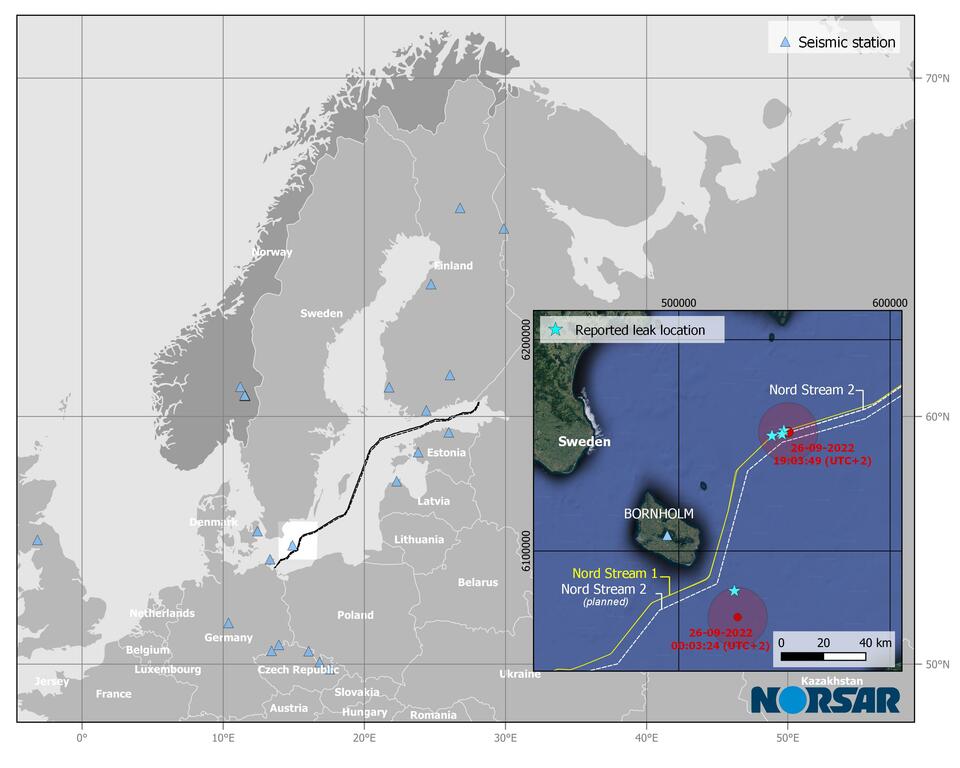The test ban treaty technologies are put into use

NORSAR’s most important task is to monitor compliance with the Comprehensive Nuclear-Test-Ban Treaty, which prohibits explosions of nuclear weapons. Although the UN agreement has not entered into force, it has contributed to strengthening international security and global non-proliferation and disarmament of nuclear weapons.
The global network of seismic stations used in the treaty’s verification system, has also proven useful in obtaining objective and rapid information from events in an active war zone. In 2022, NORSAR has used its expertise to verify military attacks and established automatic monitoring of the areas around the nuclear power plants in Ukraine to assist the Norwegian authorities.
NORSAR has participated in the design and development of the Treaty’s verification system, and continues to be a proactive player in the Comprehensive Nuclear-Test-Ban Treaty Organization (CTBTO), where we are currently contributing to the development of software for the international data centre in Vienna and further technological development. NORSAR has been appointed as the Norwegian national data centre for the agreement and oversees the operation of six international monitoring stations on Norwegian territory. The seismic instruments are very sensitive and can pick up small tremors. In addition to natural tremors, the measuring stations can also register man-made events and help clarify their causes.
The energy from an explosion provides verifiable data
There is a great need for objective data that serves to verify military attacks. To have a network of seismic sensors in an active conflict zone, such as in Ukraine, is unique. Data from the network of stations set up to monitor compliance with the Comprehensive Nuclear Test Ban Treaty are openly available to member states. In combination with NORSAR's expertise and technology, it has been possible to provide an accurate picture of the military attacks in real time.
Efforts made in 2022 have aimed at identifying explosions from heavy shelling or missile strikes which can be detected from a great distance. Localization of smaller explosions, such as the sound of gunfire or lighter artillery is possible, but more difficult because the signals do not propagate as far and will therefore require sensors much closer to the source. The deployment of seismic and infrasound sensors in conflict zones would significantly increase our monitoring capabilities. The high resolution it achieves and the low costs of collecting these data means that this technology is well suited for monitoring future conflicts. An overview of this work was presented at the Polytechnic Association and you can view the recording here.
In 2022, NORSAR has developed new algorithms to monitor explosions near the nuclear reactors in Ukraine and can thus assist the Norwegian authorities with information on risks related to possible radioactive fallout over Norway. From its continuous monitoring, NORSAR sends information on whether explosions have been detected in the vicinity of the many nuclear reactors to the Norwegian Radiation and Protection Authority (DSA).
In September, using data from our station on Løten and available data from our Nordic colleagues, we were able to verify the explosions at the gas pipelines, Nord Stream 1 and 2, which led to gas leaks in the Baltic Sea. In close cooperation with our Swedish colleagues, we were able to both indicate the number of observable explosions provide the exact time of the events and estimate their size. The incident highlights the value of having objective data that can uncover and verify attacks that threaten national security.
 Detection of the explosions at the gas pipelines Nordstream 1 and 2 on 26 September 2022.
Detection of the explosions at the gas pipelines Nordstream 1 and 2 on 26 September 2022.
This shows how the verification regime and technologies of the Comprehensive Nuclear-Test-Ban Treaty, and our expertise can be used for other types of verification and peacekeeping work.
